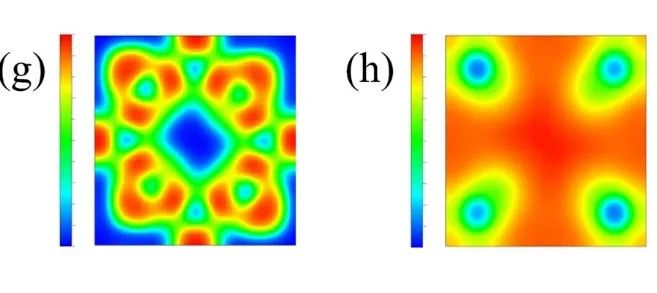海归学者发起的公益学术平台
分享信息,整合资源
交流学术,偶尔风月

虽然量子水平的高通量筛选(如第一原理计算)可以进行结构性质预测,并在寻找有前途材料方面具有很高的准确性,但其效率较低。而经典水平(如经典分子动力学)的预测效率高,但其准确率较低。机器学习方法可以很好的弥合第一性原理精度和分子动力学效率之间的差距。它经过训练后具有较高的效率和准确性,在过去的十年里已被广泛应用于材料性质的预测。机器学习算法通过评估给定的数据来学习数据集的规则和关系,并建立模型进行预测,目前已成功地预测了金属合金力学性能、晶体带隙和晶体的形成能等。然而,现有的机器学习算法所预测的材料性质通常不能超出原始训练数据,而大多数非平凡的结构都存在于巨大物质空间的稀疏区域。因此,为了预测稀疏区域内可能超过机器学习训练数据范围的材料的性质,必须开发更先进的机器学习模型。
来自美国南卡来纳大学机械工程系的Joshua Ojih等,提出了一种无限的无目标搜索(BLOX)算法来进行机械性质的搜索,可以预测超出材料原始训练数据的性质,并在具有85707个晶体结构的材料数据库中进行了验证。作者通过使用三对不同的机械性质作为搜索的属性空间,即体积模量与剪切模量、剪切模量与硬度以及普格比与泊松比,设计了无限无目标搜索算法进行极端机械性能搜索。在BLOX算法实施过程中,构建了一个机器学习模型,即随机森林算法,以预测材料的属性。在搜索空间属性时,BLOX算法搜索边界外以捕获位于边界边缘的材料的性质,这主要是通过使用Stein新奇度分数来推荐具有超出边界趋势的潜在材料来实现。该工作提出的BLOX算法,可以用于预测材料超出原始训练数据的性质,从而加速了材料发现的过程,并且可以通过密度泛函理论计算将材料性质推向极限。
该文近期发表于npj Computational Materials 8:143(2022),英文标题与摘要如下,点击左下角“阅读原文”可以自由获取论文PDF。

Efficiently searching extreme mechanical properties via boundless objective-free exploration and minimal first-principles calculations
Joshua Ojih, Mohammed Al-Fahdi, Alejandro David Rodriguez, Kamal Choudhary & Ming Hu
Despite the machine learning (ML) methods have been largely used recently, the predicted materials properties usually cannot exceed the range of original training data. We deployed a boundless objective-free exploration approach to combine traditional ML and density functional theory (DFT) in searching extreme material properties. This combination not only improves the efficiency for screening large-scale materials with minimal DFT inquiry, but also yields properties beyond original training range. We use Stein novelty to recommend outliers and then verify using DFT. Validated data are then added into the training dataset for next round iteration. We test the loop of training-recommendation-validation in mechanical property space. By screening 85,707 crystal structures, we identify 21 ultrahigh hardness structures and 11 negative Poisson’s ratio structures. The algorithm is very promising for future materials discovery that can push materials properties to the limit with minimal DFT calculations on only ~1% of the structures in the screening pool.
